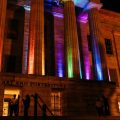Washington’s Most Powerful Women 2021
Washingtonian magazine’s list of the region’s 150-plus most powerful women includes several Smithsonian colleagues, as well as hometown heavyweights, national notables, and folks shaping things from the arts to medicine to the economy.
Power in Washington is a complicated thing to quantify. Some people have it by virtue of the office they hold. Others maintain it by virtue of their reputations, no matter what their business card might read. And in a political city, many of the most powerful among us owe their clout to voters—either the constituents who elect them directly or the national electorate who picks the government every four years.
Of course, not all power resides in high-profile arenas like politics. Some of the most powerful women on our list might be able to walk down Pennsylvania Avenue unnoticed—while still causing people to tremble in whatever other world they help shape. We are proud to acknowledge our Smithsonian colleagues among their number.
National Power and Politics
Kamala Harris, Vice President of the United States, is an ex officio member of the Smithsonian’s Board of Regents.
Nonprofits and Philanthropy
Jean Case, Jacqueline Mars, Sheila C. Johnson, and Catherine B. Reynolds.
These high-profile philanthropists focus on an array of issues: Arsht is a top arts supporter, Case’s foundation directs funds toward entrepreneurs addressing social issues, Mars is on the board of the Smithsonian and a major backer of the National Archives, and Johnson’s and Reynolds’s eponymous foundations promote arts and education.
Arts
These Smithsonian museum directors have led their museums during a time when Covid shuttered such institutions—and a racial reckoning pushed many to reassess curatorial decisions.
Melanie Adams
Director, Anacostia Community Museum
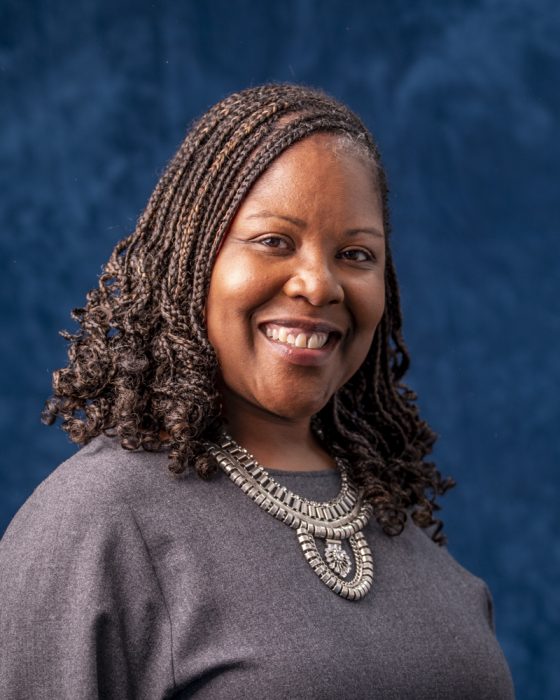
Director, Anacostia Community Museum
(Photo by Michael Barnes)
Melanie A. Adams is the director of the Smithsonian’s Anacostia Community Museum. With more than 25 years of community engagement experience in museums and higher education, she is dedicated to bringing stakeholders together to address relevant community issues.
Previously, beginning in 2016, Adams served as deputy director for learning initiatives, at the Minnesota Historical Society. She led efforts at the society to develop strategic partnerships, audiences and resources within local communities. As deputy director, she managed 26 historic sites and museums throughout Minnesota. During her tenure, she created the community outreach department to provide partnerships and programs outside the museum walls.
Adams was the managing director of the Missouri Historical Society for 11 years (2005–2016) where she oversaw more than 700 St. Louis community programs annually, including events with more than 100 community partners. Her work focused on addressing the cultural and social concerns of the St. Louis community.
Adams was president of the Association of Midwest Museums from 2014 to 2016, and she currently serves on the council of the American Association for State and Local History. As a facilitator of workshops on topics related to museums and race, she helps professionals understand barriers to connecting with diverse audiences.
Her past work has focused on racial inequality in education. Appointed by the St. Louis mayor in 2007 to the Special Administrative Board of St. Louis Public Schools, she worked for nine years with students, staff and the public to help the district regain accreditation. Adams has received numerous accolades for her community work; she was named a St. Louis NAACP 100 Community Leader in 2009 and the Royal Vagabonds Foundation Extraordinary St. Louis Trailblazer in 2014.
Adams holds a bachelor’s degree in English/African-American studies from the University of Virginia, a master’s degree in education from the University of Vermont and a doctorate from the University of Missouri St. Louis in educational leadership and policy studies.
She succeeds Lori Yarrish, who was the director of the museum from December 2017 until her death in August 2018. Lisa Sasaki, director of the Smithsonian Asian Pacific American Center, served as interim director.
Ngaire Blankenberg
Director, National Museum of African Art
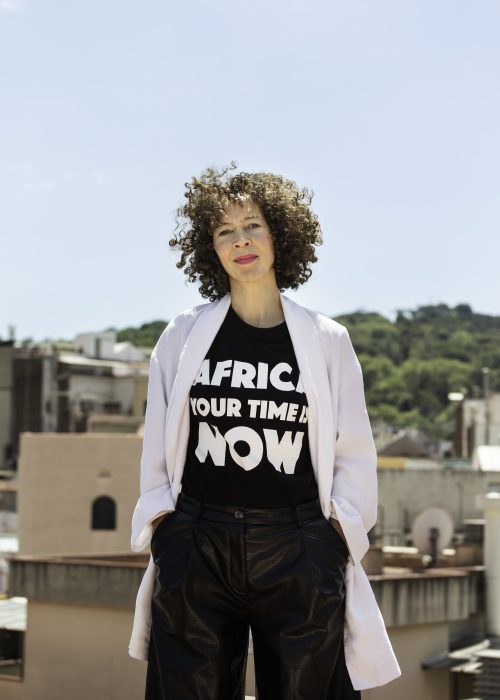
Ngaire Blankenberg is the director of the Smithsonian’s National Museum of African Art, the nation’s premiere museum devoted to the arts of Africa. Founded as a small museum on Capitol Hill in 1964, the museum became a part of the Smithsonian in 1979 and, in 1987, it moved to its current location on the National Mall. The museum’s collection of more than 12,000 objects represents nearly every area of the continent of Africa and contains a variety of media and art forms.
Previously, Blankenberg was a consultant for museums and cultural destinations around the world, finding innovative ways to connect cultural resources to new audiences and -reimagining the museums of the future.
She has advised clients on concept development, operations and business planning, programming, stakeholder and public engagement and more. Her recent consulting clients include the National Gallery of Canada, Superblue, Museum and Archive of the Constitution at the Hill (Johannesburg), the Canadian Museum for Human Rights, MEG—Musée d’ethnographie de Genève, Olympique de Marseille football club and other global and local institutions.
In 2017, Blankenberg served as the head of content and strategy for Kossmanndejong, an Amsterdam-based design agency where she helped museum clients shape their interpretive approach to exhibitions, strategic planning, new business development and content development. Previously, she spent eight years (2008–2016) at Lord Cultural Resources as a principal consultant. From 2015 to 2016, she served as the director of Lord Cultural Resources in Europe.
In addition to her extensive work consulting for museums and cultural heritage sites, Blankenberg is an award-winning TV and documentary producer and director, public speaker and a published author.
Blankenberg holds a Master of Arts in media and cultural studies from the University of Natal, in Durban, South Africa, and a bachelor’s degree in journalism from Carleton University in Ottawa, Ontario, Canada.
She succeeds Augustus Casely-Hayford, who was director of the museum until March 2020. Deborah Mack from the Smithsonian’s National Museum of African American History and Culture has served as the interim director of the museum.
Melissa Chiu
Director, Hirshhorn Museum and Sculpture Garden
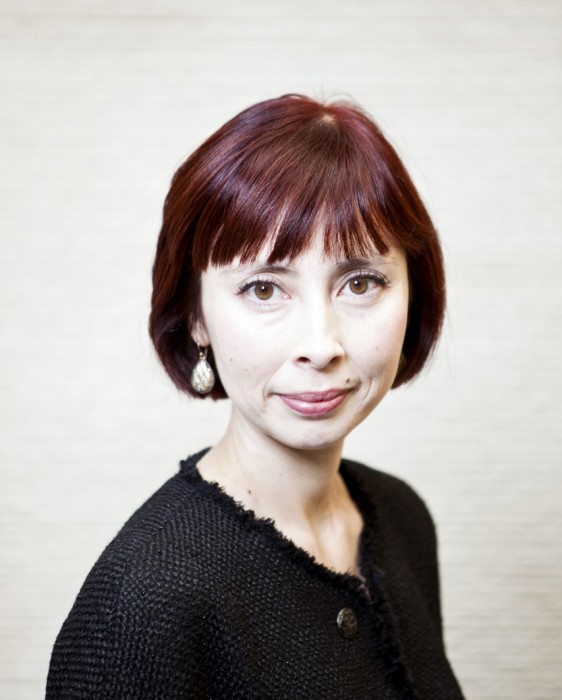
Director of the Hirshhorn Museum and Sculpture Garden
(Photo by Ashley Gilbertson)
Melissa Chiu (pronounced CHEW) is the director of the Smithsonian’s Hirshhorn Museum and Sculpture Garden, the national museum of modern and contemporary art. Since her appointment in 2014, she has advocated for contemporary art through the museum’s exhibitions, acquisitions and public programs. She oversees a collection of nearly 12,000 objects that represent pieces by leading artists from the late 19th century to the present day, including paintings, sculpture, mixed‑media pieces, photography, works on paper, performance, video and film.
While maintaining the Hirshhorn’s focus on 20th- and 21st-century art, the museum has presented landmark exhibitions of work by some of the most important contemporary artists, notably Shirin Neshat, Robert Irwin, Ai Weiwei, Yayoi Kusama and Charline von Heyl. Under Chiu’s leadership, the Hirshhorn has also commissioned site-specific artworks that connect with the museum’s unique architecture, such as a piece by Linn Meyers and an installation by Mark Bradford. Chiu has expanded the museum’s substantial holdings of European and American postwar art to include examples of global modernism. Works by Park Seo-bo, Jimmie Durham, Monir Farmanfarmaian, Natsuyuki Nakanishi and Senga Nengudi have been added to the collection.
Within the first year of Chiu’s tenure, she doubled the number of board members. The board now includes representatives from across the country, and, for the first time, international members. Under her leadership, the Hirshhorn welcomed over 1 million visitors in 2017—a major milestone marking its highest annual attendance in nearly 30 years and doubling its visitation from three years prior. In addition, she secured two multimillion dollar gifts to the Hirshhorn—the largest gifts in the museum’s history. Chiu’s current organizational focus is transforming the Hirshhorn into a 21st-century institution through establishing the Future Fund to support a number of new technology initiatives such as the award-winning mobile video guide, Hirshhorn Eye (Hi).
A native of Australia, Chiu earned her bachelor’s degree in 1992 at the University of Western Sydney in art history and criticism and her master’s in arts administration in 1994 from the College of Fine Arts at University of New South Wales. She completed her doctorate with a dissertation on experimental Chinese art at the University of Western Sydney in 2005. Chiu has authored and edited several books and catalogs on contemporary art, including Contemporary Art in Asia: A Critical Reader (MIT Press, 2010), lectured at Harvard, Yale, Columbia, the Museum of Modern Art and other universities and museums.
Anthea M. Hartig
Elizabeth MacMillan Director, National Museum of American History
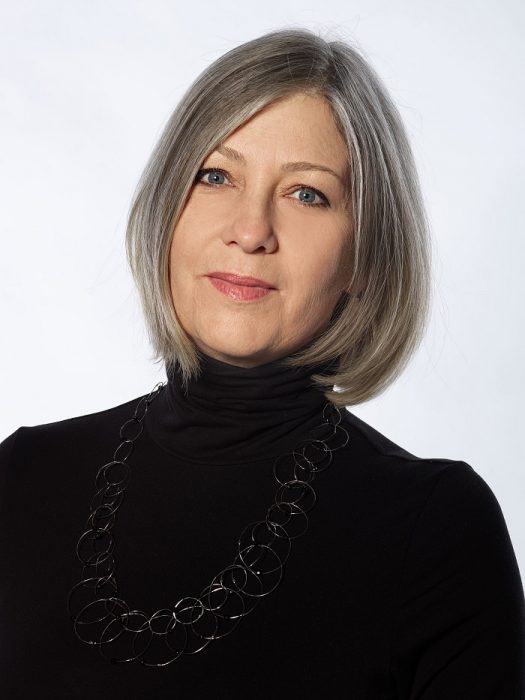
Elizabeth MacMillan Director, National Museum of American History
Anthea M. Hartig is the Elizabeth MacMillan Director of the Smithsonian’s National Museum of American History and the first woman to hold the position since the museum opened in 1964. Hartig oversees more than 250 employees, a budget of over $40 million and a collection that includes 1.8 million objects and more than three shelf-miles of archives. She officially began her tenure Feb. 18, 2019. Hartig succeeded John Gray, who served as the museum’s director from 2012 to 2018.
In response to the COVID-19 pandemic, Hartig has put in place two task forces, one on collecting around the current crisis and the other a digital response team to create new content, particularly in the area of K–12 education. During this time, Hartig is also coordinating security, facilities and other functions in cooperation with the Smithsonian leadership and other museum directors. All Smithsonian museums continue to be closed until further notice to support the effort to contain the spread of COVID-19.
Hartig is currently leading the museum in crafting a vibrant new strategic plan to take the museum through to the Semiquincentennial of the United States in 2026 and beyond. It will show the museum as the most accessible, inclusive, relevant and sustainable American history museum. Through incomparable collections, rigorous research and dynamic public outreach, the National Museum of American History seeks to empower people to create a just and compassionate future by exploring, preserving and sharing the complexity of the past.
In commemoration of the 100th anniversary of the 19th Amendment’s ratification granting women the right to vote, the museum is presenting three new exhibitions that are powerful contributors to the Smithsonian American Women’s History Initiative, including “Creating Icons: How We Remember Woman Suffrage,” which opened March 5 and “Girlhood (It’s Complicated),” slated to open later this year.
An award-winning public historian and cultural heritage expert, Hartig is dedicated to making the nation’s richly diverse history accessible and relevant. A third-generation native of Southern California, she grew up in the greater Pomona Valley. Before joining the Smithsonian, she was the executive director and CEO of the California Historical Society (CHS) in San Francisco. Under her leadership, CHS doubled its staff, created over 30 exhibitions, created its digital library and created the Teaching California initiative, a free online history portal for K–12 students that brings the archive into the classroom. She also served as the director of the Western Region for the National Trust for Historic Preservation from 2005 to 2011 and has been involved in historic preservation and public history projects since the 1990s. She earned her doctorate and master’s degrees in history at the University of California, Riverside, her bachelor’s degree at the University of California, Los Angeles and studied as an undergraduate and graduate student at the College of William and Mary. Dedicated to public and non-profit advocacy, Hartig has served on numerous California State Commissions, task forces, and Boards, including the California Preservation Foundation, National Council for Public History and the Organization of American Historians.
The National Museum of American History houses some of the Smithsonian’s best-known treasures: the Star-Spangled Banner, the flag that inspired the words for the National Anthem; the hat worn by President Abraham Lincoln the night he was assassinated; the writing desk used by Thomas Jefferson as he drafted the Declaration of Independence; the Woolworth lunch counter that was the site of the 1960 student sit-in in Greensboro, North Carolina; and Dorothy’s Ruby Slippers from the movie The Wizard of Oz.
Kim Sajet
Director, National Portrait Gallery
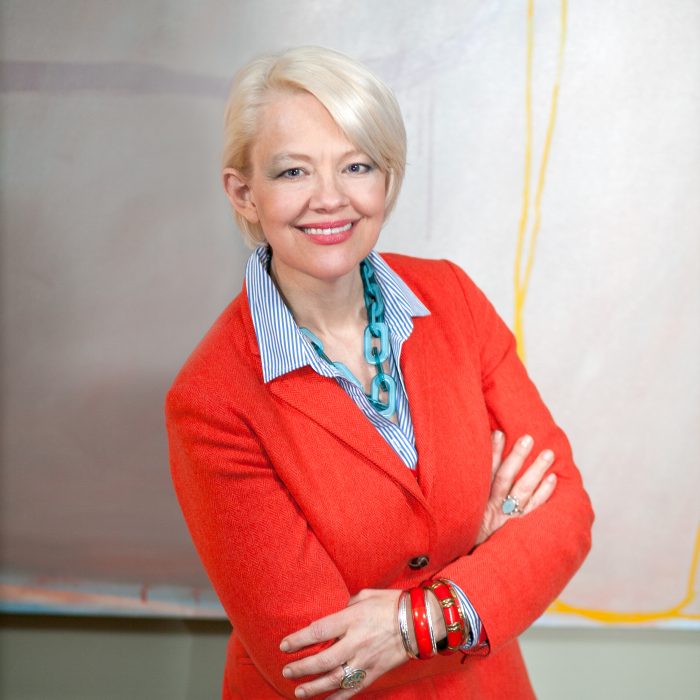
Director, National Portrait Gallery
(Photo by Wendy Concannon)
As the first woman to serve as director of the Smithsonian’s National Portrait Gallery, Kim Sajet (pronounced Say-et) has been exploring new ways to place personal experience and creativity at the center of learning and civic awareness. Not just a place to see famous Americans, the museum explores identity as a social construct that has been shaped in equal measure by opportunity and ability, prejudice and fear. By taking a cross-disciplinary approach that merges the traditional forms of painting, sculpture, drawing and printmaking with poetry, installation art, video and performance, Sajet aims to bring history alive.
Sajet oversees a staff of 97 with an annual federal budget of $11 million (fiscal year 2017) and a collection of about 23,000 objects. The museum’s mission is to tell the multifaceted story of the United States through the individuals who have shaped the nation’s culture.
Before her current appointment, Sajet was the president and CEO of the Historical Society of Pennsylvania, the vice president and deputy director of the Pennsylvania Academy of the Fine Arts and the director of corporate relations at the Philadelphia Museum of Art. Before arriving in the United States with her family in 1997, she served first as curator and then as director of two Australian art museums from 1989 until 1995.
Born in Nigeria, raised in Australia and a citizen of the Netherlands, Sajet brings a global perspective to the position. She earned a master’s degree in art history from Bryn Mawr College, a master’s degree in business administration from Melbourne University Business School in Australia, a bachelor’s degree in art history from Melbourne University and a graduate diploma in Museum studies from Deakin University in Australia. She has completed arts leadership training at the Harvard Business School, the Getty Institute and National Arts Strategies. In addition to 20 years of arts management experience, Sajet has written a number of scholarly publications, curated exhibitions and spoken at academic symposia around the world. Her current interests include the study of identity politics, role-playing in online virtual worlds and the significance of celebrity in American history.
Stephanie Stebich
The Margaret and Terry Stent Director of the Smithsonian’s Museum of American Artand its Renwick Gallery
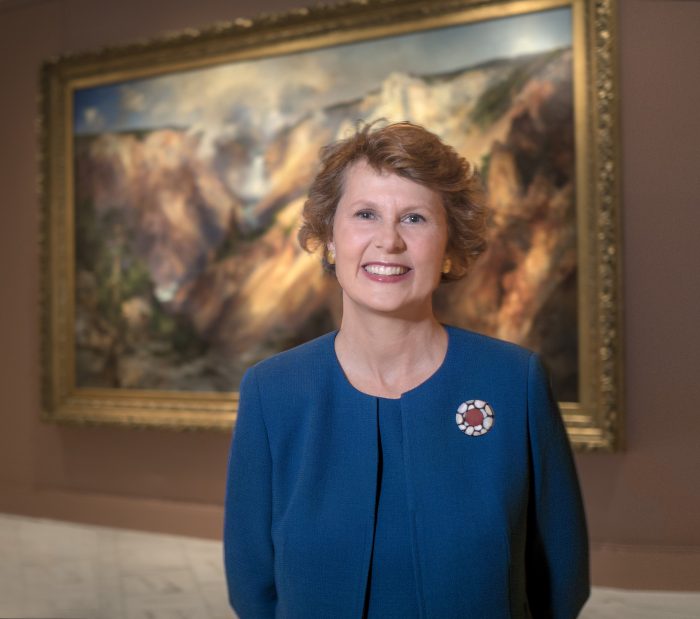
The Margaret and Terry Stent Director, Smithsonian American Art Museum
(Photo courtesy SAAM)
Stephanie Stebich (pronounced STEE-BISH) is responsible for the nation’s premier collection of American art and major exhibition, research, publication, education and digital-media programs at the museum and its Renwick Gallery. She was named director of the Smithsonian American Art Museum in January 2017. Stebich serves on the Smithsonian’s Capital Board as well as the Smithsonian-London Strategic Advisory Board. In May 2018, she was named co-chair of the Smithsonian American Women’s History Initiative.
Before coming to Washington, D.C., Stebich had been executive director of the Tacoma Art Museum since 2005. Under her leadership, the museum underwent a major renovation that doubled its exhibition space; launched a capital campaign with a goal of $17 million and raised more than $37 million; and added endowed curator, educator and fellow positions. She oversaw the development and implementation of the museum’s strategic plan, as well as a 10-year collecting strategy. At Tacoma, Stebich championed the presentation of many groundbreaking exhibitions and secured major collection gifts, including the Haub Family Collection of Western American Art, 300 masterworks from the 1790s to the present by Charles Bird King, Thomas Moran, Frederick Remington, Georgia O’Keeffe and others; and the Rebecca and Jack Benaroya Collection, 225 works of American studio glass featuring Pilchuck School artists such as Dale Chihuly, Ginny Ruffner and Therman Statom as well as artworks by Northwest artists such as Morris Graves and Deborah Butterfield.
Stebich was assistant director of the Minneapolis Institute of Arts from 2001 to 2004 and assistant director at the Cleveland Museum of Art from 1995 to 2001. She was previously a trustee of the Association of Art Museum Directors from 2010 to 2012, where she led and implemented its diversity initiative as chair of the membership committee. She currently serves as a trustee of the American Alliance of Museums and is a member of the executive committee.
Stebich earned a bachelor’s degree in art history from Columbia University and a master’s degree with a concentration in modern art from the Institute of Fine Arts at New York University. She has a certificate in nonprofit management from Case Western Reserve University and is a graduate of the Getty Leadership Institute in Los Angeles. She was a fellow at the Guggenheim Museum and has studied at the University College London. She is fluent in German and French.
Ellen Stofan
Smithsonian Under Secretary for Science and Research
The former National Air and Space Museum director got a promotion—helping her shape the entire Smithsonian Institution.
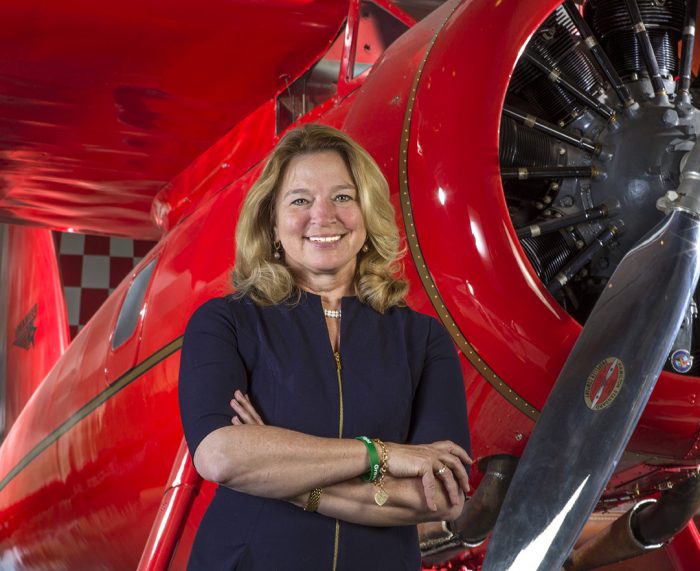
Smithsonian Under Secretary for Science and Research
(Photo by Jim Preston)
Ellen Stofan is the Under Secretary for Science and Research at the Smithsonian. She oversees its science research centers as well as the National Museum of Natural History and the National Zoo. The Smithsonian Libraries and Archives, Office of International Relations, Smithsonian Scholarly Press and Scientific Diving Program also report to Stofan. Her focus is the Smithsonian’s collective scientific initiatives and commitment to research across the Institution, especially addressing issues such as biodiversity, global health, climate change, species conservation, astrophysics and the search for life outside Earth’s solar system.
Previously, Stofan was the John and Adrienne Mars Director of the Smithsonian’s National Air and Space Museum (2018–2021) where she was the first woman to hold that position. Under her leadership, the museum began its seven-year renovation of its flagship building in Washington, D.C., in 2018. Stofan also oversaw the momentous celebration of the 50th anniversary of the first moon landing in July 2019 at the museum and on the National Mall.
Before joining the Smithsonian, Stofan had than 25 years’ experience in space-related organizations and a deep research background in planetary geology. She was chief scientist at NASA (2013–2016), serving as the principal advisor to former Administrator Charles Bolden on NASA’s strategic planning and programs. She helped guide the development of a long-range plan to get humans to Mars, and worked on strategies for NASA to support commercial activity in low Earth orbit as it transitions from the International Space Station to sending humans to the moon and Mars in the mid-2020s.
She earned her bachelor’s degree in geology at the College of William & Mary in Williamsburg, Virginia, and her master’s and doctoral degrees at Brown University, both in geological sciences. While finishing her doctoral degree, Stofan joined the Jet Propulsion Lab (JPL) as a post-doctoral fellow and became the deputy project scientist for the Magellan Mission to Venus.
In 1994, Stofan became JPL’s chief scientist for the New Millennium Program where she managed a team of about 100 scientists working on new technologies. The following year, Stofan moved to London while continuing to work at JPL and was, and continues to be, an honorary professor at University College London.
For 13 years (2000–2013), Stofan was vice president and senior scientist at Proxemy Research, a consulting firm in the Washington area specializing in planetary research.
Stofan’s research focuses on the geology of Venus, Mars, Saturn’s moon Titan and Earth. Her favorite mission was Cassini, primarily because of her interest in Titan.
She has published extensively and received many awards and honors, including the Presidential Early Career Award for Scientists and Engineers and the NASA Distinguished Service Medal, and was named one of “CNN’s Extraordinary People of 2014.” She is co-author of the books Planetology: Unlocking the Secrets of the Solar System and Next Earth: What Our World Can Teach Us About Other Planets, both published by National Geographic.
This post is excerpted from Washingtonian magazine. To see a complete list of Washington’s most powerful women, click here.
Posted: 19 October 2021
-
Categories:
African Art Museum , American Art Museum , Art and Design , Hirshhorn Museum , Kudos , News & Announcements , Portrait Gallery , Renwick Gallery

